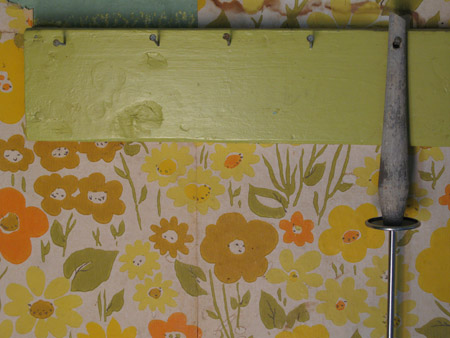This Old House
We live in an old house. It was built in 1928 by my wife’s great-grandfather, a legendary United Church preacher and Member of Parliament who owned most of the block – on most of which he grew apples and roses. He gave the house to his eldest daughter – my wife’s grandmother – a few years later. He then did the same for the rest of his daughters, and all next door to each. And all of them lived in their homes until they died.
An entire family grew in this house. Five kids – two elegant daughters and three rowdy boys – were raised in this house during an era when houses were used – really lived in – and were not sterile display cases for social pretense. Bathtubs overflowed, windows were broken, hundreds of people were entertained… repairs were made, and made poorly. The house bears these scars and other signs of good use.
One one hand, the house is a gem. Its foundation and construction are so solid that only in the past few years has the house begun to shift. The roof contains twice the usual number of beams. All the doors on the second floor close as if they were hung this morning. The basement has never – in 80 years – flooded in a part of town renowned for it. Everything, from the basement concrete and oak flooring to the lathe-and-plaster walls and single-pane windows, is original and, in a blunt and utilitarian way, beautiful.

On the other hand, little concern was given over the years to the aesthetics of the surfaces of the house. A nail served as good a hook as anything else. Strand board was a perfectly reasonable interior finish for the back porch. 3/4″ plywood was a perfectly suitable material for all the cabinetry in the house. Because these were reasonable and suitable options, nothing was ever updated. The concept didn’t enter the mind. Except for maybe the paint, sometimes, but even that was obviously applied with only a mere hint of concern for its appearance (it’s not a family of drinkers, so I’m at a loss).
I’m not sure if I’m complaining or romanticizing. On one hand, I appreciate style (the house has none) and craftsmanship (the paint…and plywood!), but on the other I can appreciate the emphasis on real needs of function over the arguably false needs of aesthetics, particularly in something like a house that was built to raise a family, that was built to be used and not merely maintained for show. Who really ought to care that the hook isn’t wrought iron or brass? Who really should care that the kitchen cupboards aren’t custom cherry? They do what they’re supposed to do, and part of me wants to be content with that. The house serves as an object lesson in practical needs, a lesson that I feel maintains my perspective and keeps me from falling into a mind-set of needless fashion.
But to complicate matters, the marks of use I see everywhere are persistent, almost tyrannical reminders that this is not our house. We legally own it, we live here, but it is not ours. We’re like hermit crabs inhabiting an old shell, a shell that isn’t exactly suited to our needs or wants.
For one thing, there are too many walls; sharply dividing areas of the house 80 years ago was important. Kitchens were small on purpose, and closet space wasn’t a big factor. I guess getting in and out of the basement wasn’t something that needed to be quick and easy. And, of course, energy efficiency wasn’t a consideration of any kind during the age of coal heating when this house was built.
But even beyond these material problems, there is the ever-present fact that the house has had an entire other family live their life here. Part of me likes the idea, especially since it was my wife’s father, aunts and uncles, grandmother and grandfather who all lived here and loved each-other here. But that reality looms. I feel like I am accountable to it, that what ever we do to the house, however we change to make it better suited to our family, it will always have been someone else’s house.
Understandably, I’m on the fence about what to do. I think about the future and where I want to be, what space I want to be in. From this utterly pragmatic perspective, this house doesn’t fit into that future. But the complicated but endearing history of the house carries a weight that holds me here; I think about my children growing and living in the same house that their great-great-grandfather built for his daughter – their great-grandmother – and where she raised her son – their grandfather – and had so many of the same lovely and stupid memories we are having every day.
If one thought could cancel out any of my own selfish needs, that could very well be it.